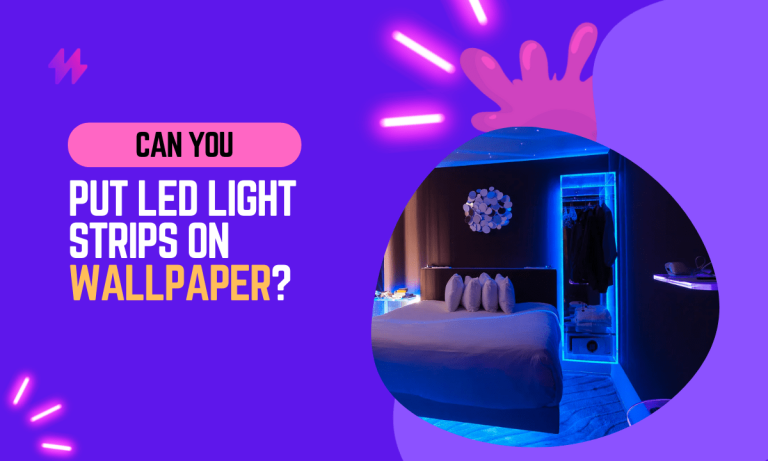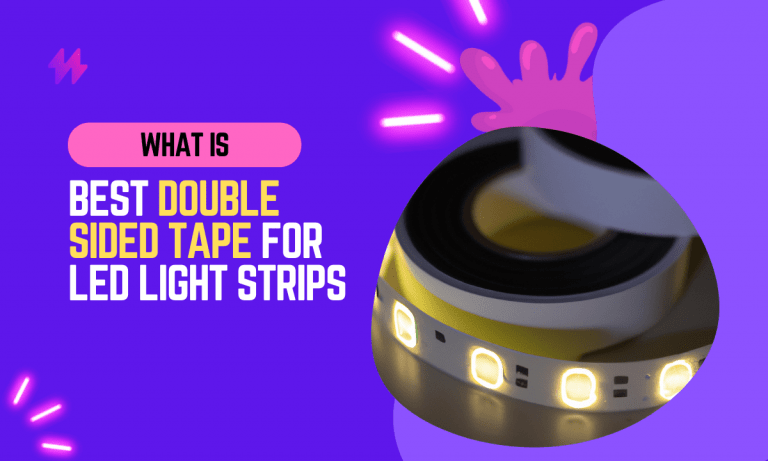RGBWW vs RGBW Strip Lights: Which Is Right for You?

In a world that’s increasingly illuminated with the vibrant hues of LED strip lights, choosing the right lighting solution can be as daunting as picking the perfect paint color for your walls. You’re undoubtedly here because you’ve heard the buzz about RGBWW vs RGBW strip lights, and you’re curious about which one will best transform your space.
The quest for the ideal illumination begins with a crucial choice between these two versatile options. RGBW strip lights, with their ability to produce millions of colors and a dedicated white LED, have long been a favorite. However, emerging onto the scene with even greater flexibility are RGBWW strip lights, boasting the full spectrum of colors, warm white, and cool white LEDs.
In this illuminating comparison, we’ll shed light on the differences, benefits, and practical applications of RGBW and RGBWW strip lights, helping you make an informed decision to brighten your world.
Whether you’re an interior design aficionado, a tech enthusiast, or simply seeking to elevate your ambiance, let’s dive into the dazzling world of these dynamic LED strips and discover which one holds the key to illuminating your desires.
RGBWW Strip Lights
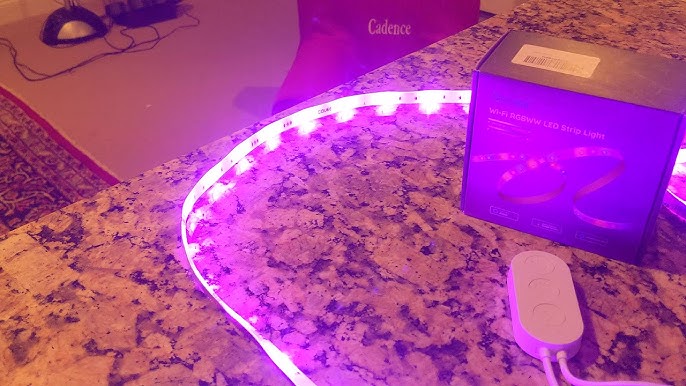
RGBWW strip lights are the new shining stars in the world of LED lighting, offering a broader spectrum of colors and lighting possibilities. In this section, we’ll illuminate what RGBWW strip lights are, how they differ from their RGBW counterparts, and why they are gaining attention among lighting enthusiasts.
RGBWW stands for Red, Green, Blue, Warm White, and Cool White. These strips extend the capabilities of RGBW strips by introducing warm white and cool white LEDs alongside the primary red, green, and blue LEDs. This expanded palette opens up a world of creative lighting possibilities.
- The Full Color Spectrum: What sets RGBWW strip lights apart is their ability to create not only a wide range of colors but also varying shades of white. By adjusting the intensity of the red, green, blue, warm white, and cool white LEDs independently, you can achieve an extensive spectrum of colors and color temperatures. From the warm, inviting glow of candlelight to the crisp, cool light of daylight, the possibilities are virtually limitless.
- Diverse Applications: RGBWW strip lights are incredibly versatile. They are suitable for a myriad of applications, including ambient lighting, task lighting, and accent lighting. These strips excel in scenarios where precise color temperature control is essential. For instance, they are ideal for kitchen under-cabinet lighting, where you may need warm white light for meal preparation and cooler white light for focused task lighting.
- Mood Enhancement: The ability to fine-tune both color and color temperature makes RGBWW strip lights an excellent choice for creating specific moods and atmospheres. Whether you’re aiming for a cozy, romantic setting in a restaurant or a productive, energizing workspace in your home office, RGBWW strips can help set the perfect ambiance.
- Natural Lighting Effects: RGBWW strips are well-suited for replicating natural lighting effects. They can mimic the changing colors and intensities of sunlight throughout the day, making them an attractive option for spaces that lack access to natural light, such as basements or windowless rooms.
- Controller Options: To fully harness the capabilities of RGBWW strip lights, you’ll need a compatible controller. These controllers often come with features like color temperature adjustment, color presets, and dynamic lighting effects. Some even integrate with smart home systems, allowing for voice control and automation.
You may also like: RGB vs RGBIC – What’s The Difference?
RGBW Strip Lights
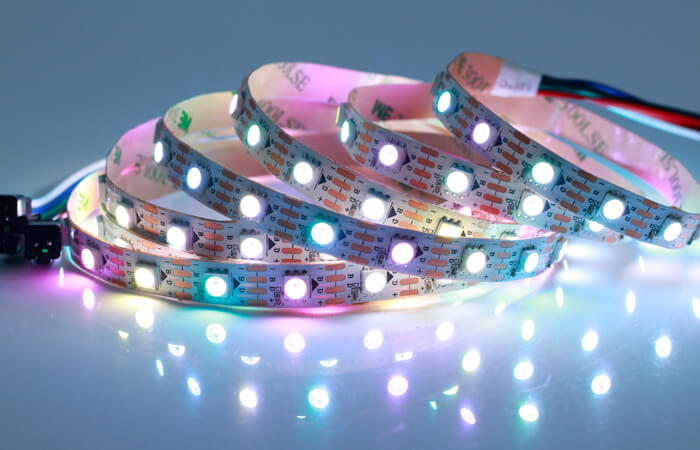
RGBW strip lights represent a prominent category within the ever-expanding world of LED lighting. To grasp their significance and potential applications, let’s look deeper into what RGBW strip lights are all about.
RGBW stands for Red, Green, Blue, and White. Unlike traditional RGB strips, which only combine red, green, and blue LEDs to create various colors, RGBW strips incorporate a dedicated white LED alongside these primary colors. This addition of a white LED is pivotal because it enhances the versatility of these strip lights.
- Basic Functionality: At its core, RGBW strip lighting is all about color mixing. By adjusting the intensity of the red, green, blue, and white LEDs, you can create a vast spectrum of colors. This capability allows for a stunning array of visual effects, from calming pastels to vibrant, eye-catching hues.
- Color Accuracy: RGBW strip lights are known for their superior color accuracy. With the dedicated white LED, they can produce a pure white light that’s difficult to achieve with RGB strips. This makes them an excellent choice when you require precise and consistent colors in your lighting design.
- Applications: RGBW strip lights find their home in various settings and applications. They are particularly well-suited for accent lighting, mood lighting, and task lighting. For instance, in home theaters, you can adjust the color temperature to create the perfect cinematic atmosphere. In retail spaces, RGBW strips can highlight products with stunning, accurate lighting. For residential use, they’re perfect for setting the mood in living rooms, kitchens, and bedrooms.
- Energy Efficiency: RGBW strips are often energy-efficient. The white LED in these strips is typically used for general and task lighting, and it consumes less power compared to RGB strips attempting to generate white by combining all three primary colors. This efficiency can lead to cost savings over time.
- Controller Options: To control RGBW strip lights effectively, you’ll need a compatible controller. These controllers come in various forms, from basic remote controls to advanced smartphone apps that allow you to fine-tune colors, and brightness, and even create dynamic lighting effects.
Also read: 12V vs 24V LED Strip Lights: Choosing the Right Voltage
Comparing RGBWW vs RGBW Strip Light
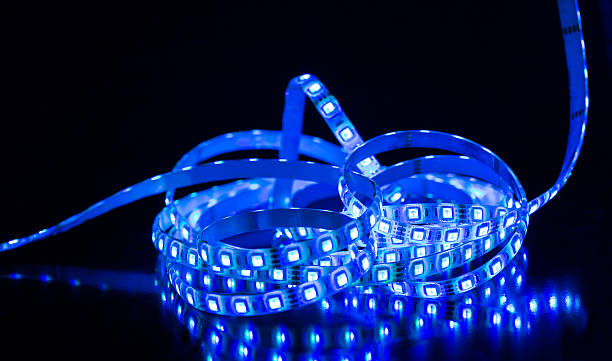
Now that we’ve introduced RGBW and RGBWW strip lights individually, let’s embark on a detailed comparison to help you discern which one aligns best with your lighting objectives. We’ll weigh the features, benefits, and practical aspects of each type, shedding light on the factors that can influence your decision.
Color Range and Accuracy
RGBW strip lights offer a wide color range, allowing you to create an array of vibrant colors. Their dedicated white LED ensures accurate and pure white light, making them suitable for applications where color accuracy is essential.
RGBWW strip lights, on the other hand, extend the color spectrum further with the addition of Warm white and cool white LEDs. This makes them exceptionally versatile for achieving precise color temperatures and a broader range of white tones.
Ambiance and Mood
RGBW strips are excellent for setting a dynamic ambiance with rich and vivid colors. They are well-suited for creating eye-catching displays and visual effects in entertainment areas.
RGBWW strips excel at creating various moods and atmospheres by offering not only diverse colors but also the ability to fine-tune the warmth or coolness of white light. This makes them ideal for spaces where a specific ambiance is desired, such as dining rooms or bedrooms.
Applications
RGBW strips are commonly used for accent lighting, stage lighting, and decorative purposes. They are a preferred choice when you need intense, saturated colors.
RGBWW strips are versatile and adapt well to a wide range of applications. They are particularly suitable for residential settings where both color and white lighting are required, such as in kitchens or living rooms.
Energy Efficiency
RGBW strips are generally energy-efficient, especially when using the white LED for general lighting. They consume less power compared to RGB strips trying to create white by blending colors.
RGBWW strips can also be energy-efficient, particularly when using white LEDs for illumination. The ability to choose warm or cool white light allows for energy savings depending on the situation.
Controller Options
Controllers for RGBW strips offer color adjustment and basic lighting effects. They are suitable for users who want to create dynamic lighting but don’t require precise color temperature control.
RGBWW strips often come with controllers that provide more advanced features, including the ability to fine-tune color temperatures. These controllers are ideal for those who want precise control over both color and white light tones.
Cost Considerations
RGBW strip lights are typically more budget-friendly than RGBWW strips due to their simpler LED configuration.
RGBWW strips may have a slightly higher upfront cost due to their expanded capabilities, but they offer enhanced versatility and can potentially lead to long-term cost savings in terms of energy efficiency.
Also read: 2835 vs 3528 vs 5050: Understanding LED Light Strip
Factors to Consider When Choosing Between RGBWW vs RGBW
Choosing between RGBW and RGBWW strip lights requires careful consideration of several key factors. Your decision should align with your specific lighting needs, ambiance preferences, and practical requirements. Here are the critical factors to contemplate:
Intended Use
Consider whether your primary aim is to create dynamic, colorful lighting effects. RGBW strips are ideal for accent lighting, visual displays, or spaces where vibrant colors are a priority.
If you require versatility in both color and white light temperature to match different moods or activities, RGBWW strips are a better fit. They excel in spaces where precise lighting control is essential.
Ambiance and Mood
Think about the atmosphere you want to establish. RGBW strips are fantastic for parties, events, and entertainment areas where you want to dazzle with striking colors and visual effects.
For spaces where a specific mood or ambiance is crucial, such as restaurants, bedrooms, or home offices, RGBWW strips’ ability to adjust color temperature becomes invaluable.
Color Accuracy
If color accuracy and purity are paramount for your application, such as in art galleries or retail displays, RGBW strips with dedicated white LEDs are a strong choice.
RGBWW strips are also precise in color rendering but offer a broader range of color temperatures, making them suitable for applications requiring various shades of white.
Energy Efficiency
RGBW strips are generally energy-efficient, especially when using the dedicated white LED for general lighting. They can be cost-effective in the long run.
RGBWW strips can also be energy-efficient, depending on how you use them. The ability to choose warm or cool white light allows for energy savings in certain situations.
Smart Home Integration
If you have a smart home system in place, check for compatibility with both RGBWW vs RGBW strips. Many controllers and systems offer integration, allowing you to control your lighting through voice commands or smartphone apps.
By weighing these factors thoughtfully, you can make an informed decision between RGBW and RGBWW strip lights that align perfectly with your lighting objectives and enhance your space in the most appealing and practical way.
Also read: How To Connect Daybetter LED Lights to Phone App
Final Words
In conclusion, when deciding between RGBWW and RGBW LED strip lights, the choice ultimately hinges on your specific lighting needs and the desired ambiance for your space. RGBW strip lights, which combine red, green, blue, and white diodes, offer a vibrant range of colors along with the addition of pure white light, making them ideal for scenarios where dynamic color blending and bright illumination are required. The white diode in RGBW strips enhances the ability to create sharper, cleaner whites, which is beneficial for both aesthetic and functional lighting applications, such as in display cases or for task lighting where clarity and color accuracy are paramount.
On the other hand, RGBWW strips include an additional warm white diode, which provides a cozier, softer white light compared to the often stark white of RGBW. This feature makes RGBWW strips particularly suitable for residential and hospitality environments where creating a warm, inviting atmosphere is key. The warm white diode allows for more nuanced color temperature control, offering a spectrum from cool to warm light that can enhance mood and complement interior design elements more effectively. Therefore, if your priority is to foster a relaxing and welcoming environment, RGBWW might be the more appropriate choice. Understanding the unique benefits of each LED type and considering how the light’s color temperature and brightness will interact with your intended setting will guide you in selecting the best option to meet your lighting goals, ensuring both functionality and aesthetic appeal are achieved.
In the end, both RGBW and RGBWW strip lights are portals to a world of creativity and ambiance. They empower you to transform your environment and express your unique style through the mesmerizing play of light and color.


